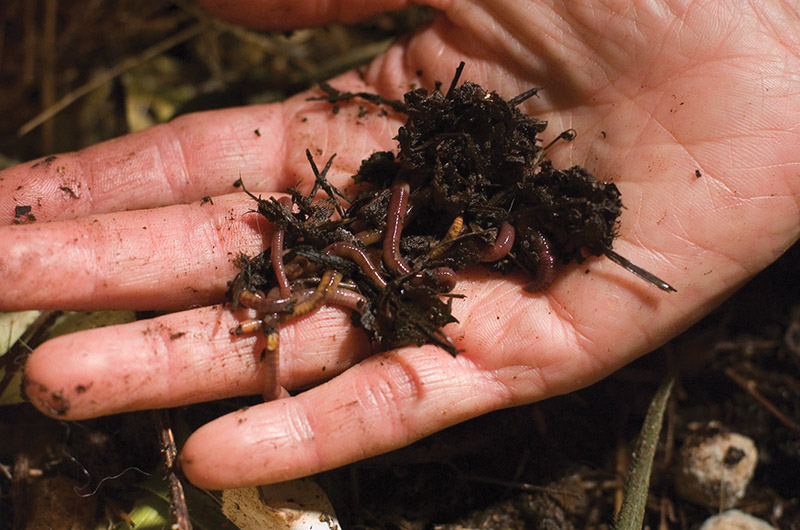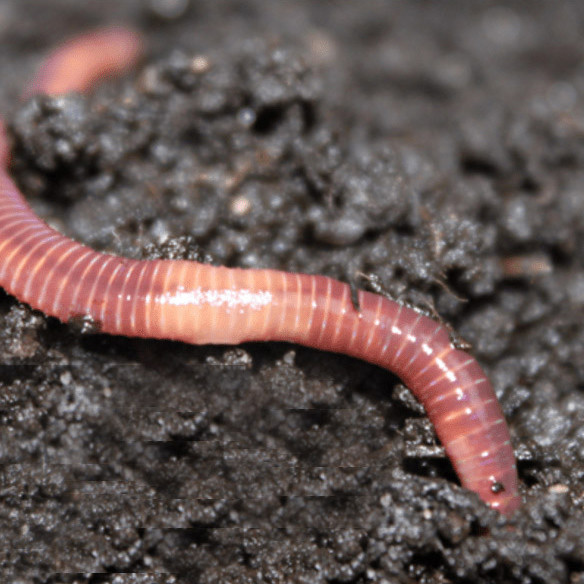Live red wigglers: A beginner’s guide composting
Live red wigglers: A beginner’s guide composting
Blog Article
Exactly How Red Wigglers Can Increase Your Organic Waste Recycling
Red wigglers represent an essential part in improving natural waste recycling, efficiently converting day-to-day kitchen scraps and garden particles right into important worm spreadings. This procedure not just minimizes the volume of waste sent to garbage dumps yet additionally enhances dirt vigor, promoting much healthier plant development without the need for artificial fertilizers. Comprehending the ins and outs of establishing a vermicomposting system and the optimal treatment for these worms can significantly magnify the benefits. The question stays: exactly how can one efficiently integrate this practice into their routine to make the most of impact?

Benefits of Red Wigglers
Red wigglers, a kind of composting earthworm, deal many benefits that make them invaluable in organic waste recycling. Their ability to eat a wide range of natural materials makes them very effective decomposers. These worms can refine kitchen area scraps, garden waste, and even paper products, transforming them right into nutrient-rich castings. This procedure not only lowers the volume of waste sent out to landfills but also enhances soil health and wellness.
Furthermore, red wigglers enhance dirt oygenation and drain via their burrowing activities, advertising a healthier root setting for plants. Their castings are rich in valuable bacteria and crucial nutrients, fostering robust plant development and boosting soil structure (red wigglers). In addition, using red wigglers in composting is an eco-friendly choice to chemical fertilizers, which can have dangerous negative effects.
Additionally, vermicomposting with red wigglers is a low-maintenance and efficient method of recycling natural waste, making it accessible for families and areas alike. Their quick recreation rate makes sure a consistent supply for recurring composting initiatives, better amplifying their benefits. On the whole, red wigglers act as a pivotal element in lasting waste monitoring and soil enhancement techniques.
Establishing a Vermicomposting System
Developing a reliable vermicomposting system calls for careful preparation and factor to consider of different aspects that add to its success. The foundation of a successful system begins with selecting an appropriate bin. Alternatives vary from business containers to homemade choices, but it is important that the container is well-ventilated and properly sized to accommodate the number of red wigglers.
Following, the selection of bed linen material is crucial. Ideal bed linens consists of shredded paper, cardboard, or coconut coir, which offers both a habitat and a resource of carbon for the worms. The bed linen ought to be moistened but not overly wet to stop anaerobic problems.
Preserving the optimal setting is necessary. Red wigglers prosper in temperatures between 55 ° F and 77 ° F(13 ° C to 25 ° C )and call for a pH level around neutral. Monitoring dampness degrees is additionally critical, as way too much moisture can lead to smell problems, while insufficient can dry out the worms.
Lastly, positioning the vermicomposting system in a shaded area secured from straight sunshine will certainly assist keep a steady environment. With these factors to consider in mind, one can effectively establish up a thriving vermicomposting system that enhances organic waste recycling.
What to Feed Red Wigglers
Feeding red wigglers the best materials is fundamental to keeping a healthy vermicomposting system. These worms grow on a diverse diet plan primarily made up of natural matter, which consists of vegetables and fruit scraps, coffee grounds, smashed eggshells, and shredded paper. It is vital to stay clear of feeding them meat, dairy, oily foods, or any kind of processed items, as these can develop smells, draw in insects, and lead to an unhealthy setting.
A balanced diet for red wigglers promotes ideal digestion and nutrient manufacturing. Go for a mix of environment-friendly products, high in nitrogen, such as vegetable peels and lawn trimmings, and brown materials, rich in carbon, like dried out leaves and cardboard. This equilibrium guarantees a lasting food resource while maintaining moisture levels in the worm container.
In addition, it is recommended to slice or shred bigger scraps to speed up decay and make the food much more accessible to the worms. On a regular basis monitoring the intake price will help identify the proper amount to feed, avoiding overfeeding and preserving a thriving environment. By giving a suitable diet regimen, you not just support the health of red wigglers but additionally improve the performance of your vermicomposting efforts.
Keeping Your Worm Container
To guarantee the health and productivity of your vermicomposting system, keeping your worm bin is essential. Routine tracking of moisture levels is important; the bedding should be wet however not soggy. If it comes to be find as well wet, excess dampness can cause anaerobic conditions, harming your worms. Conversely, if it is too completely dry, worms might end up being inactive or die.
Severe temperatures can emphasize or kill your worms. To achieve this, put your container in a climate-controlled environment away from straight sunshine or heat sources.
Oygenation is vital for oxygen flow. Delicately transforming the bedding with a garden fork every couple of weeks will certainly help aerate the product and protect against compaction. Additionally, be cautious regarding the container's odor. A nasty smell might indicate overfeeding or a discrepancy in the carbon-to-nitrogen ratio. If this happens, lower feeding and add more carbon-rich materials like shredded paper or cardboard.
(red wigglers for composting)
Using Worm Spreadings in Gardening

Worm castings, typically referred to as "black gold" by gardeners, are a very nourishing natural plant food that can substantially improve soil health and wellness and plant growth. These castings are generated by red wigglers as they absorb raw material, leading to an abundant, dark, crumbly substance including valuable microorganisms.
Including worm castings right into garden soil improves its framework, aeration, and moisture retention, creating an optimum atmosphere for origin development. The high nutrient web content of worm castings, consisting of nitrogen, phosphorus, and potassium, adds to strenuous plant development and increased returns. Furthermore, worm castings have necessary trace minerals and enzymes that promote the overall health of plants, enabling them to better hold up against parasites and conditions.
Worm spreadings can be used straight to the soil or combined right into potting mixes for container horticulture. A thin layer spread over garden beds or added to compost heap can also boost the microbial task and nutrient account of the garden compost. As a lasting and environment-friendly plant food choice, worm castings support natural horticulture methods while decreasing dependence on artificial plant foods, thus fostering a healthier community.
Conclusion
To conclude, the assimilation of red wigglers right into natural waste reusing practices offers a feasible service for improving soil wellness and promoting lasting gardening methods. By properly decomposing kitchen area scraps and garden waste, red wigglers add to nutrient-rich worm spreadings that boost dirt aeration and wetness retention. This environmentally friendly strategy not only lowers garbage dump contributions yet likewise decreases the dependancy on chemical fertilizers, ultimately cultivating much healthier ecosystems and liable waste management techniques.
Report this page